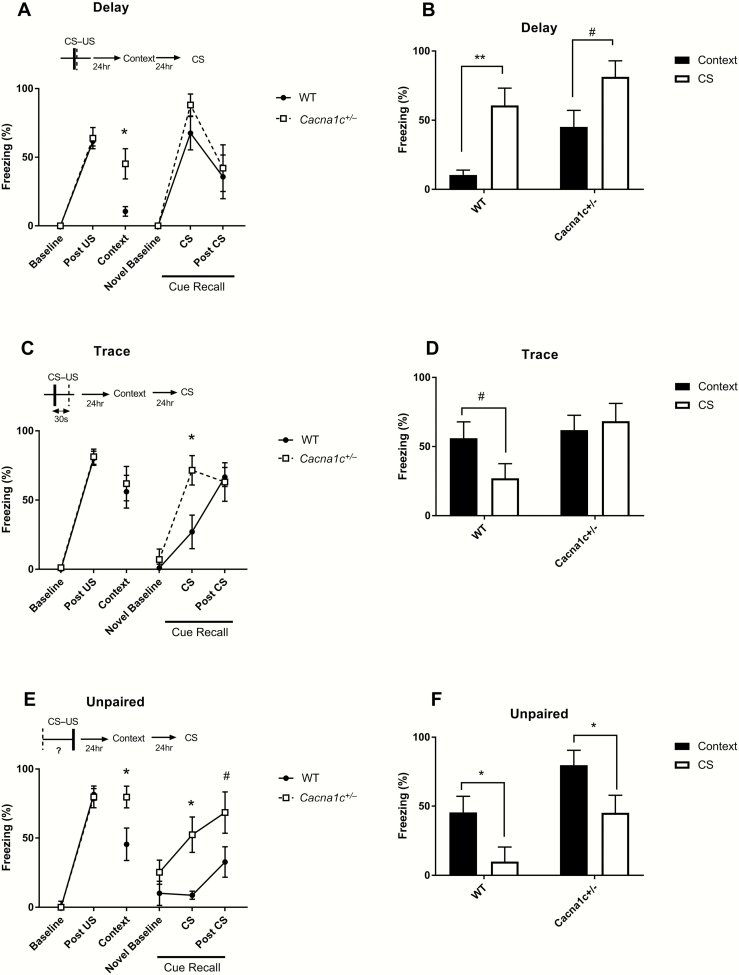Fig. 2.
Delay, trace, and unpaired fear conditioning in wild-type Cacna1c+/− rats. A = Following delay conditioning, Cacna1c+/− rats display increased freezing responses to conditioned context (Context) in comparison to wild-types, although wild-types still freeze more than at baseline. Nevertheless, the Cacna1c+/− rats show a similar response to wild-types in a novel context (Novel Baseline) and to the auditory CS during Cue Recall. B = Wild-type rats freeze significantly more to the CS during Cue Recall than to the conditioning context in the Context Recall session after delay conditioning but for the heterozygotes, this difference is smaller (n = 7/genotype). C = Following trace conditioning, Cacna1c+/− rats show comparable freezing behavior to the wild-types during Context recall; however, they display increased freezing during auditory CS presentation during the Cue Recall session. Similar levels of freezing to wild-types were noted during Novel Baseline and Post-CS periods. D = Trace conditioned wild-type rats show a trend to freezing less to the auditory CS during Cue Recall than to the conditioning context, but for Cacna1c+/− rats there is no difference (n = 8/genotype). E = After unpaired conditioning, Cacna1c+/− rats show increased fear responses to the conditioned context and CS. F = Both wild-type and Cacna1c+/− rats freeze more to the conditioned context than the CS (following unpaired conditioning) (n = 7/genotype). There were no behavioral differences between the Cacna1c+/− and wild-type rats during delay, trace, and unpaired training (Baseline and Post-US periods). Data points represent mean percentage freezing per group for each session; error bars are SEM. Cacna1c+/− vs wild-type rats; # = P < .1, * = P < .05, ** = P < .01, Tukey Kramer HSD.

